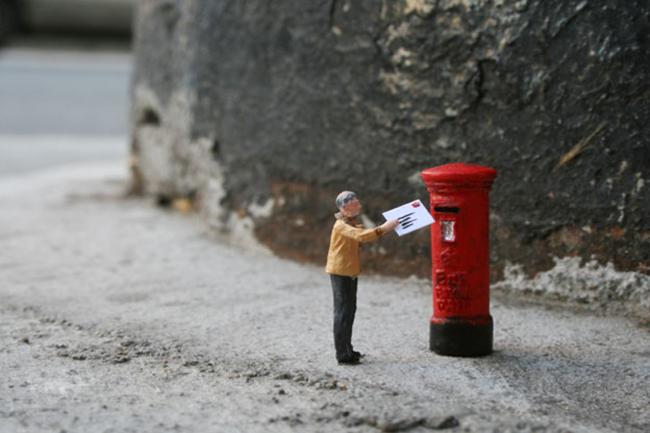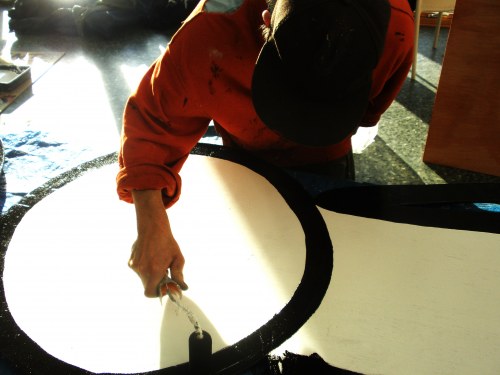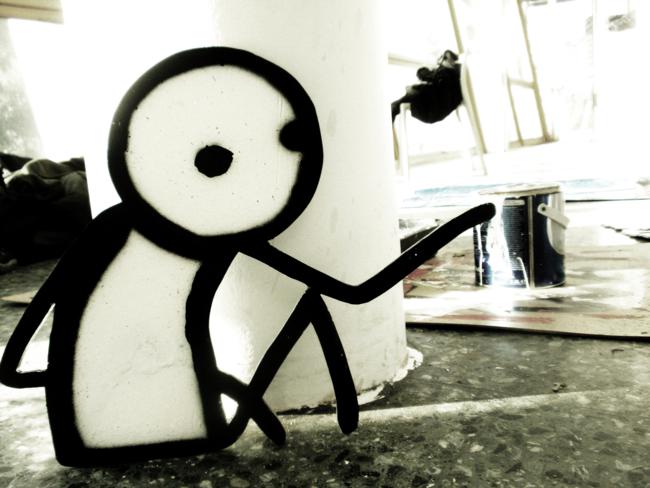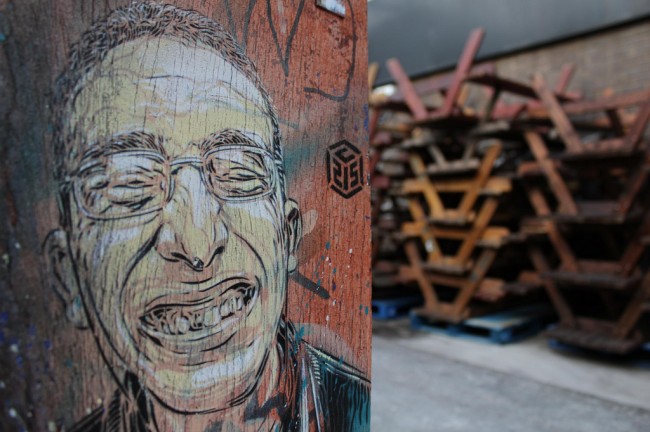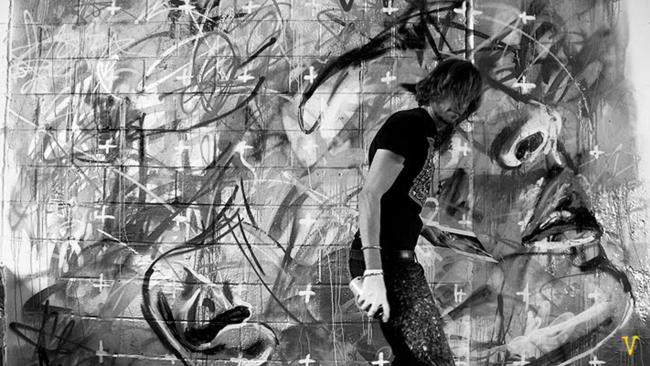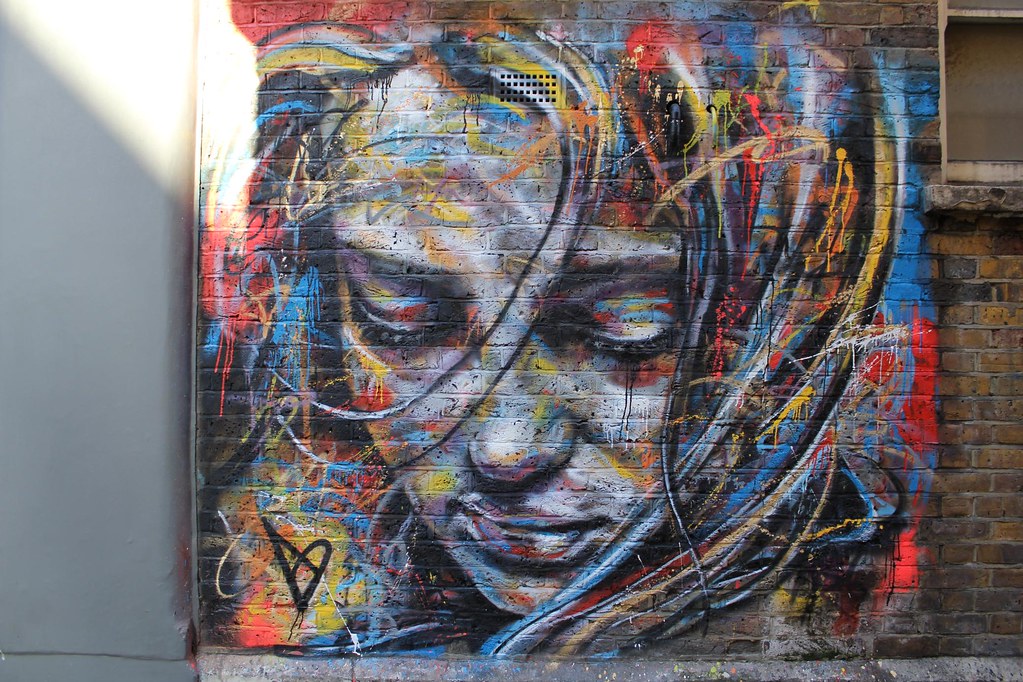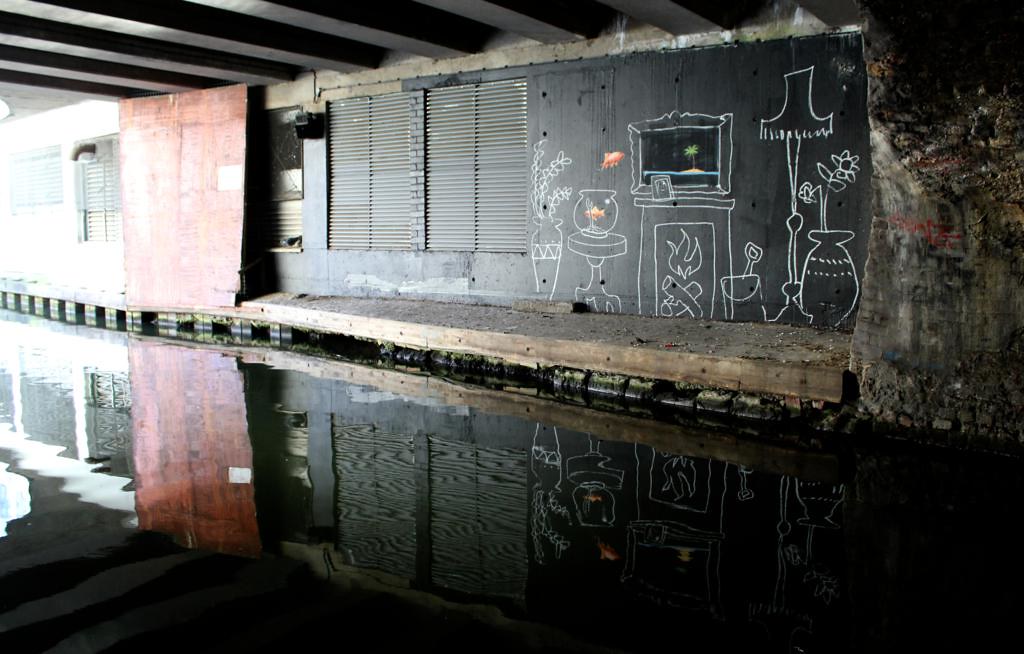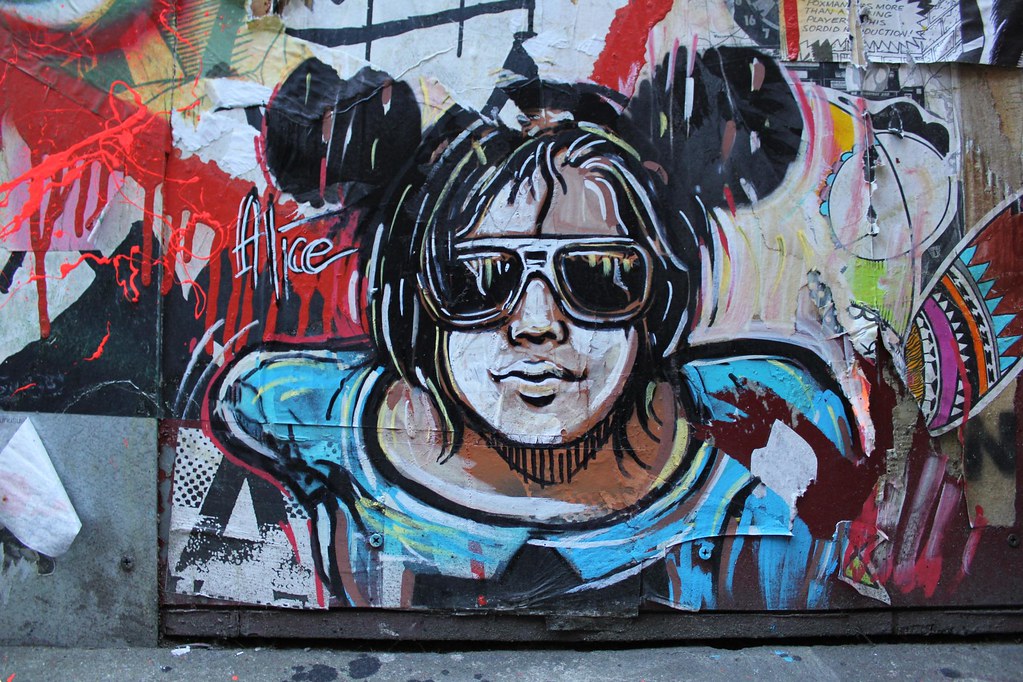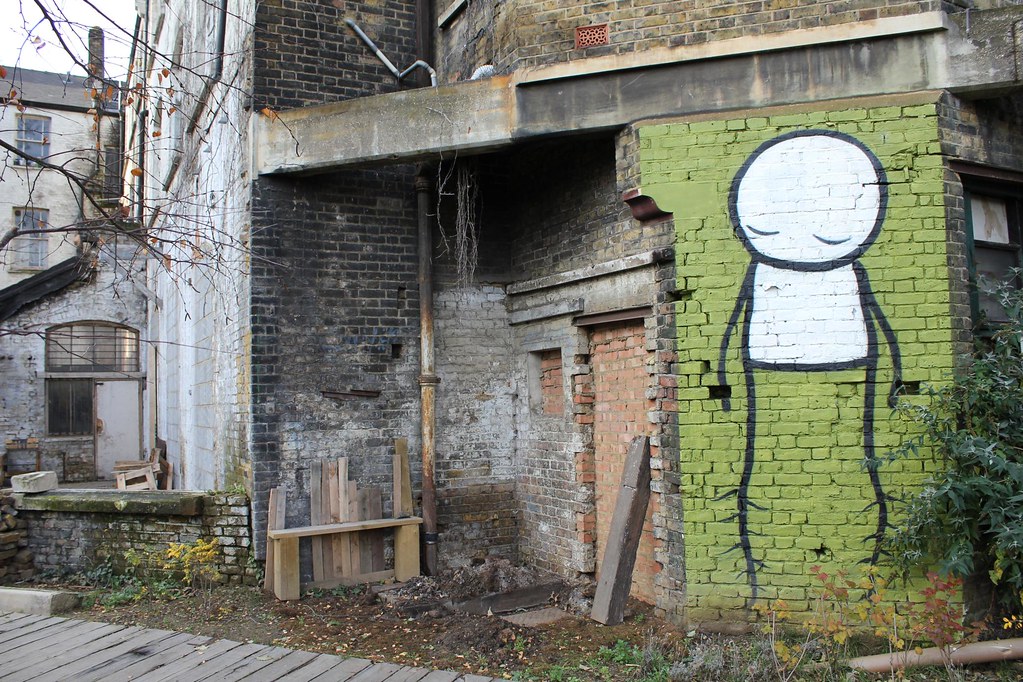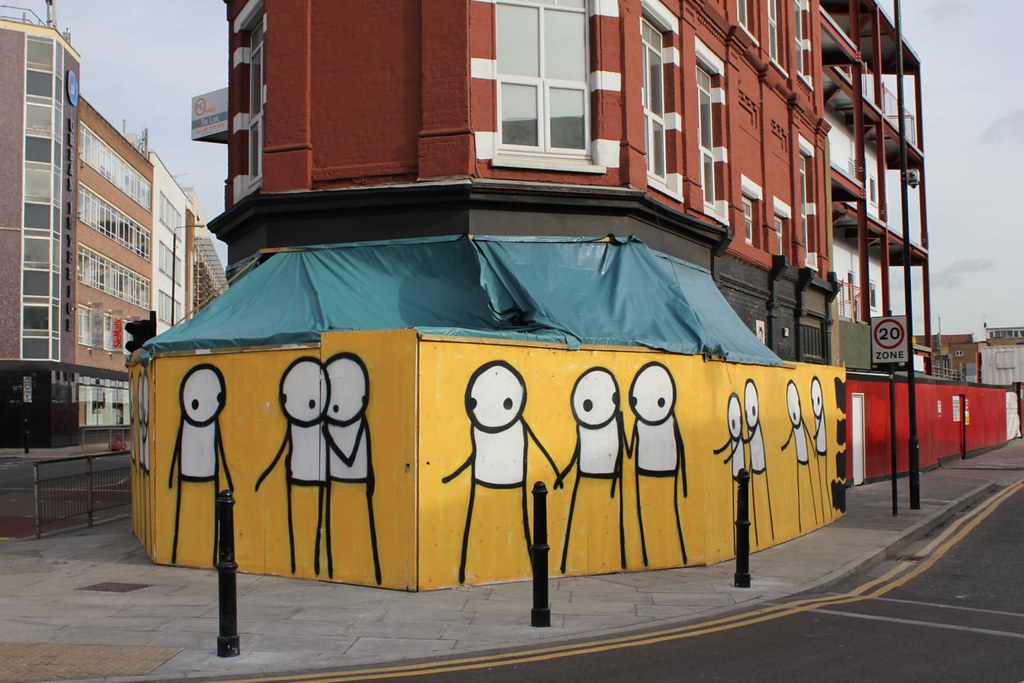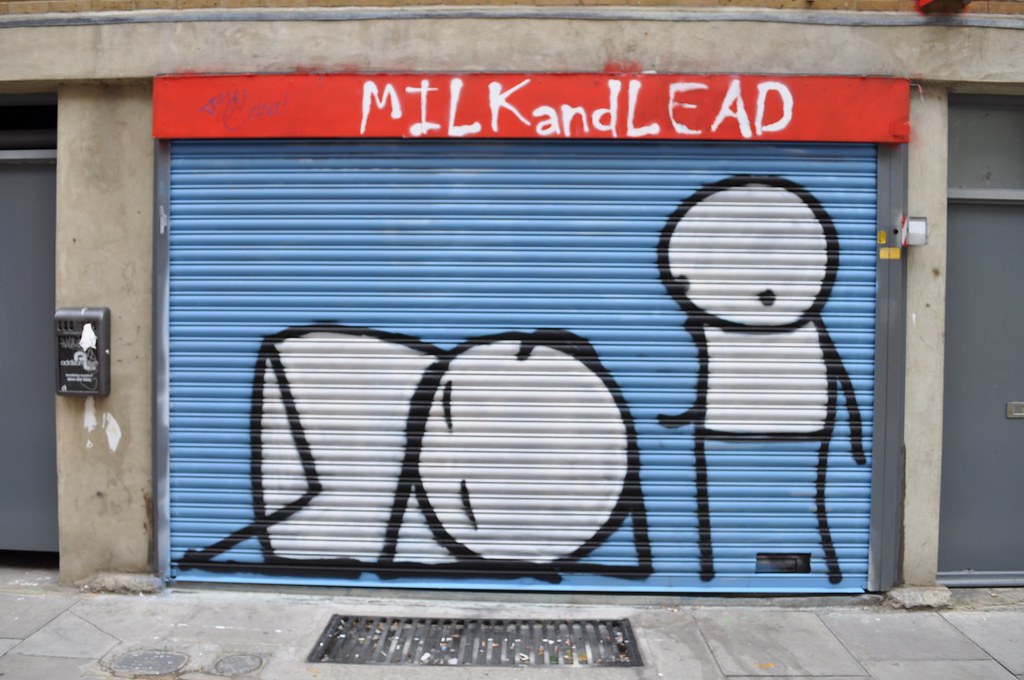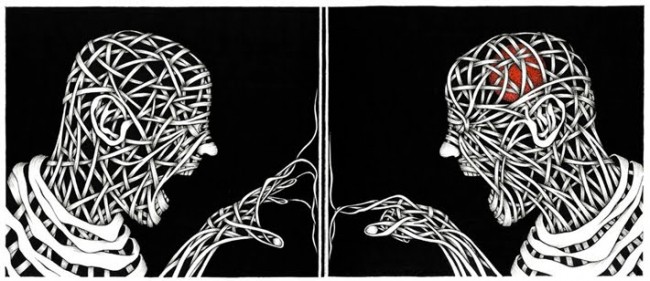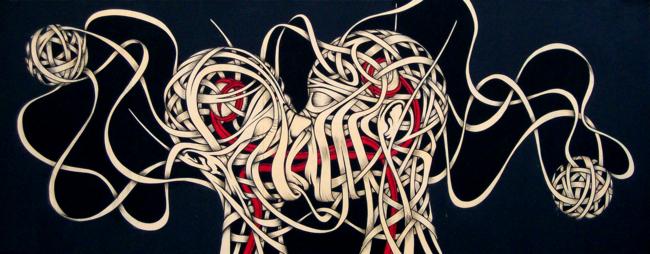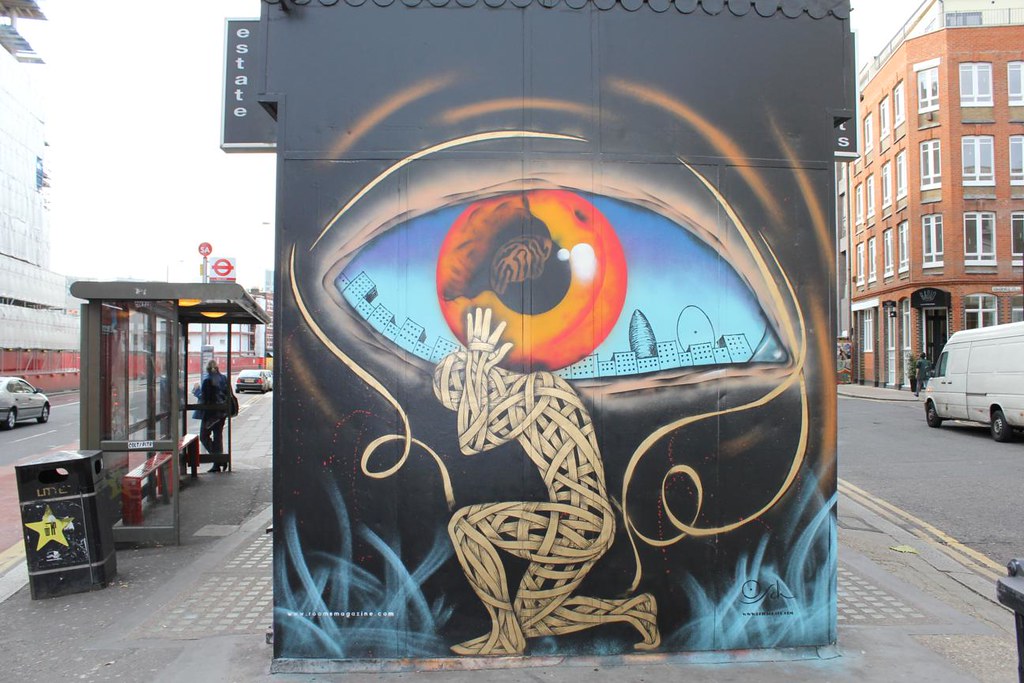The street artist known only as Slinkachu has been abandoning little people on the streets of London since 2006. His first project, ‘Little People in the City’, saw minature men, women and children living their lives on the streets of London and was immortalised in the 2008 book entitled Little People in the City”. Since then, Slinkachu has done a number of other projects, notably ‘Whatever Happened to the Men of Tomorrow’ which documented the decline of a tiny, middleaged and balding super-hero on the streets of London and ‘Inner City Snail – a slow moving street art project’ which saw Slinkachu ‘customising’ a number of London snails which then presumably went about their business none the wiser. So, next time you are out and about in London, look down, for you might be missing out on the drama undolding below.
Dear Son
